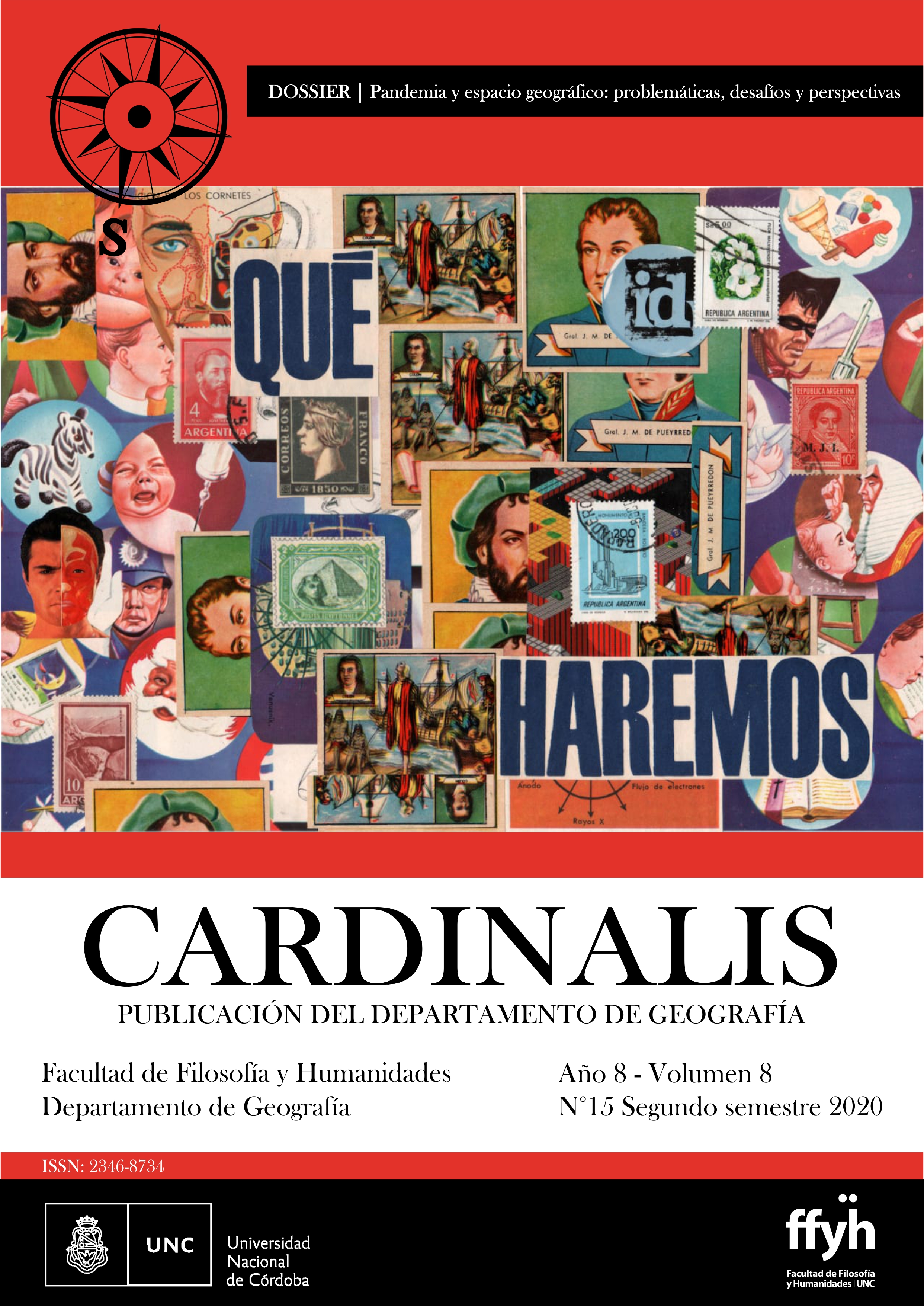Human mobility in times of pandemic. About borders and socio-spatial gaps
Abstract
Migrations have been one of the most researched topics in the field of Contemporary Geography as a clear exponent of the existence of a Global Geography. The complexity of human mobility, and its interdependencies with respect to goods, images and information, have been one of the maximum expressions of the space of flows and networks, whose acceleration led to a profound reinterpretation of the nexus between social and spatial mobility. The intensity of the movements generated in this context is currently affected by the covid pandemic19, whose speed of expansion, for the moment unpredictable in its scope, has made it necessary to contain it. The objective of the work is to analyze the incidence of the pandemic in human mobility issues, emphasizing the new role of borders and socio-spatial gaps. In this exploratory research and with the application of qualitative methodologies, it was resorted to the analysis of bibliographic, journalistic and official sources that allowed us to open interpretations in an unstable field of analysis, since these are ongoing processes, but which envision deep territorial transformations. While the States put up strict control barriers to prevent the spread of the virus, displacements continue under new strategies that put in tension the space of control and the population itself, aggravating the social conflict.
Downloads
Downloads
Published
How to Cite
Issue
Section
License

This work is licensed under a Creative Commons Attribution-NonCommercial-ShareAlike 4.0 International License.
Aquellos autores/as que tengan publicaciones con esta revista, aceptan los términos siguientes:- Los autores/as conservarán sus derechos de autor y garantizarán a la revista el derecho de primera publicación de su obra, el cuál estará simultáneamente sujeto a la Licencia de reconocimiento de Creative Commons (indicada abajo) que permite a terceros compartir la obra siempre que se indique su autor y su primera publicación esta revista.
- Los autores/as podrán adoptar otros acuerdos de licencia no exclusiva de distribución de la versión de la obra publicada (p. ej.: depositarla en un archivo telemático institucional o publicarla en un volumen monográfico) siempre que se indique la publicación inicial en esta revista.
- Se permite y recomienda a los autores/as difundir su obra a través de Internet (p. ej.: en archivos telemáticos institucionales o en su página web) antes y durante el proceso de envío, lo cual puede producir intercambios interesantes y aumentar las citas de la obra publicada. (Véase El efecto del acceso abierto).

Esta obra está bajo una Licencia Creative Commons Atribución-NoComercial-CompartirIgual 4.0 Internacional.






